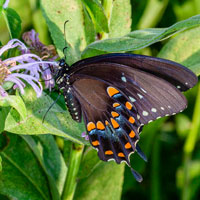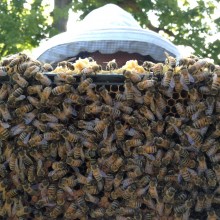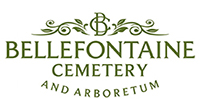Bellefontaine was founded as St. Louis’ first rural cemetery, but today it is surrounded by neighborhoods and industry. Nonetheless, the arboretum remains a tranquil haven for local wildlife, including red fox, raccoons, red-tailed hawks, wild turkeys, wood ducks and ducklings, bees and many migratory birds. 
The Mississippi Flyway
The St. Louis metro area is located along one of the most significant migratory flyways in North America: The Mississippi Flyway. Each year, over 300 species of birds use this flyway for nesting, refueling, and resting. Our resident and migratory birds depend on natural areas to survive the journey. As urban areas continue to grow and expand, backyards, parks, and cemeteries such as Bellefontaine can help provide valuable resources for wildlife.

Audubon Society Partnership
Bellefontaine has a two year partnership with the Audubon Society to conduct bird counts and recommend native grasses, perennials, shrubs, and trees to be planted that will provide food, cover and habitat for these and other important species. Over 130 species have been counted to date.
Whitney R. Harris World Ecology Center at the UMSL Partnership

The Harris Center, as part of a developing partnership with the cemetery, is beginning an inventory Bellefontaine’s native biodiversity. The Harris Center sponsored an evening of bat and moth sampling in the cemetery that may expand into a broader study. A butterfly and insect study is also underway. Understanding the biodiversity of all living creatures that utilize the cemetery grounds helps to guide decisions on plant selection and maintenance.
Honey Bee Colony

In its early days, the cemetery sold goods it produced on the property such as fruits, hay and honey to augment the burial business. As an homage to this practice, a honey bee colony was started in 2015. The bees also serve as an educational tool, highlighting the work Bellefontaine has done to provide habitat for pollinators. Volunteers and our horticulture staff serve as our beekeepers.
